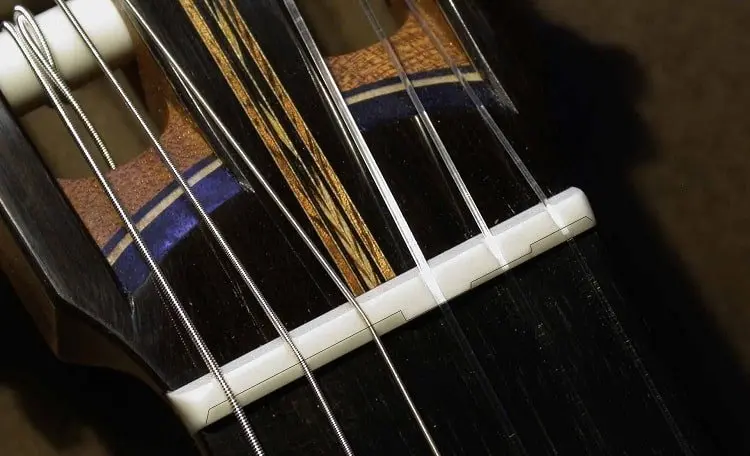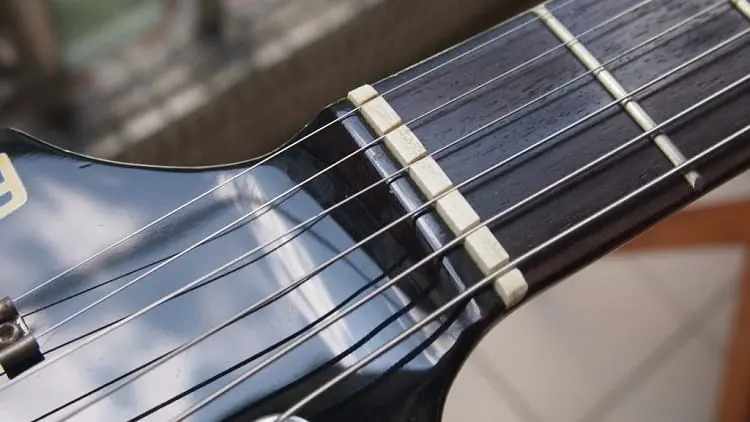 The guitar neck width is extremely important when it comes to the playability and feeling of the guitar. Different neck widths and builds will suit different playstyles and preferences for things like string spacing, so it is important to know which neck types work the best for you. The neck width is certainly an important factor for consideration when choosing a guitar. Most guitar types come in a variety of sizes, so whether you’re into steel string acoustic guitars or electric guitars you should understand the different options.
The guitar neck width is extremely important when it comes to the playability and feeling of the guitar. Different neck widths and builds will suit different playstyles and preferences for things like string spacing, so it is important to know which neck types work the best for you. The neck width is certainly an important factor for consideration when choosing a guitar. Most guitar types come in a variety of sizes, so whether you’re into steel string acoustic guitars or electric guitars you should understand the different options.
Narrow Or Wide Neck?
A narrow neck can feel easier for grasping and more precise riffs focused on speed rather than note separation, but it also means that your fingers may feel more crowded when pressing the guitar strings. Usually a narrow neck will work better for someone with smaller hands and shorter fingers.
A wide neck offers your fingers more space for fingerpicking styles and strumming complex chords, but your fingers are going to feel a bit more stretched. A wide neck is better for larger, more flexible hands.
Last update on 2024-04-04 / Affiliate links / Images from Amazon Product Advertising API
Common nut width measurements
The most common guitar nut width is exactly 1 11/16″, so that’s really what most people are used to. 1 ¾ inches is another common width that is preferred by some fingerstyle players. The extra space makes it slightly less crowded, giving your fretting fingers more space to maneuver.
If you want to accommodate some extra string pairs, the neck width on most 12 string instruments is around 1 7/8″. Nut widths of the classical guitar can reach around two inches, if not even more. Next we will dive into a little more detail for each of these common measurements.
1-5/8″ (41mm)

This is generally the smallest neck width you’ll see. This size is found on many vintage guitars as it was common during the 1950s or 60’s. Someone with small hands will certainly find this nut width nice and comfortable. Narrow necks like this can make simple chord shapes like bar chords, as well as riffs and leads with notes close together on the fretboard easier to play.
1-11/16″ (43mm)
Considered to be the regular size in the music industry during the last couple of decades, the 1 11/16″ neck width is probably the most balanced size. Great for all purposes, you really can’t go wrong with this nut width.
1-3/4″ (44mm)
This size is great for players with slightly larger hands, or styles that benefit from more space between the strings. Complex chord shapes are sometimes easier to play with more space as your fingers aren’t getting in the way of each other. Also, riffs and solos where you are jumping all over the fretboard can benefit from more string spacing so you don’t accidentally hit the wrong string. Ultimately it’s a matter of preference, so try some different sizes and see what nut width works for you! Some guitar companies from the 80’s used this size along with larger frets for the creation of a unique type of soloing feel.
1-7/8″ (48mm)
Lastly, this would really be the big daddy of all nut widths. Players with huge hands will love this nut width, as will those who enjoy building or playing guitars with more than 6 strings. This neck width is generally rarer than the previous sizes mentioned.
Additional Information

Although both electric and acoustic guitars are commonly found with a 1 11/16″ nut width size, electric guitars tend to run with narrower necks, and you’ll typically find wider necks on an acoustic guitar. This is because fingerstyle playing and strumming chords is generally easier/feels better on a slightly wider neck.
Internet shopping certainly has a ton of perks, but one of the main downsides is that you can’t test the product out. Things like the guitar neck width are often overlooked and don’t become apparent until you actually have the guitar in your hands. Once you have a good feel for the width that you like, you can look up the specs of the guitar you’re looking to buy to find what it’s nut width is.
Another important thing can differ on some guitar necks is the shape and depth. You can find necks with a slightly flatter profile or, on the contrary, a rounded profile neck or some v-like kind of shape. Again, this is just a matter of preference but will slightly affect the overall look and feel of the guitar.
Conclusion
As you can see there are plenty of options to choose from when it comes to the guitar neck width. It’s a commonly ignored and overlooked part of the guitar, so hopefully this guide will help in educating you on the different options and ultimately help you find the guitar that perfectly suits your playstyle.




